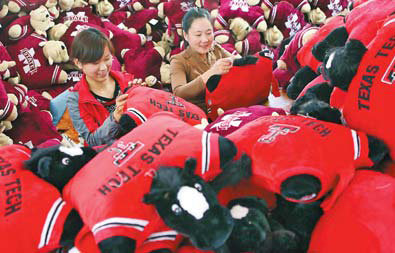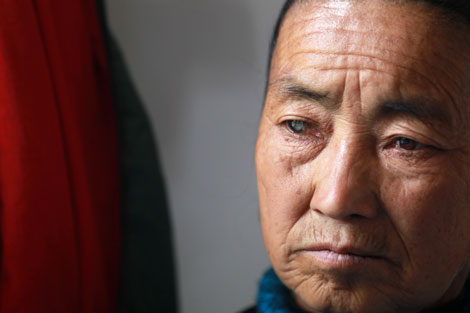US retailers say China essential to their futures
Updated: 2011-11-11 07:15
By David Lariviere (China Daily)
|
|||||||||
NEW YORK - If one were to try to snap a photograph of China, it would be difficult to capture a still shot.
That is how rapidly the country is moving and changing, said an official with the National Retail Federation of the United States, the largest retail-trade association in the world.
 |
|
Workers in a toy factory in Ganyu county, Jiangsu province, keep themselves busy working with products that are to be exported to the United States. [Photo / China Daily] |
"Everything's growing by leaps and bounds," David French, senior vice-president for government relations at the organization, said after a four-day trip to Beijing and Guangzhou this past month.
"The pace of change is so strong that it was so exciting to see it happening from the ground level. I learned more in 72 hours than in months of research about China."
He took to task US Senators who accused China of holding down the value of the yuan and passed a bill that would let the United States place duties on imports from countries found to be manipulating their currencies. He said they "are thinking about the China of five to 10 years ago".
He also predicted that China will become the leading market for luxury goods by 2020.
Both French and Matthew Shay, president and CEO of the National Retail Federation, met with Chinese retailers, manufacturers, other businesses and US and Chinese government officials. "China is integral to the success of the US retail industry," Shay said in a press release. "High-quality, high-value merchandise produced by Chinese factories is key to US retailers' ability to supply American families with the products they need and want at prices they can afford."
China is the leading supplier of imported merchandise to US retailers. Even so, wage increases in China and a recent rise in the value of the yuan have caused the country to become a more expensive source of merchandise and a more attractive market.
That is why the representatives of the National Retail Federation took their trip.
"We see a lot of opportunities in getting our goods in the consumer marketplace," French said.
Even so, French said language, cultural and political barriers must still be broken down. What may work in the US market may fail in China and vice versa. Of the 2,500 retailers French represents, he identified one as enjoying a particularly surprising amount of success in China.
"LL Bean has 66 stores in China," French said. "I'm not sure they have a dozen all across America."











